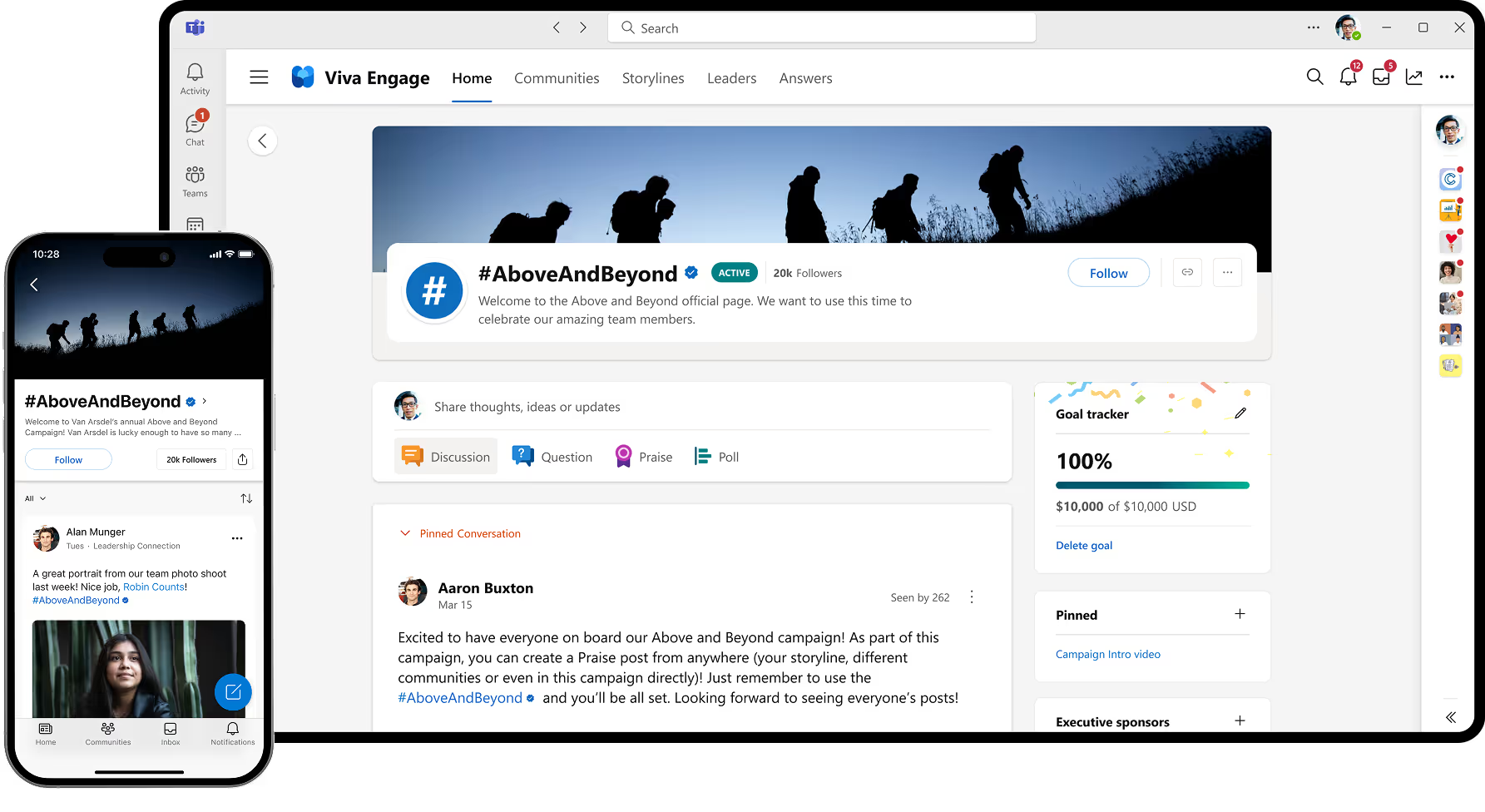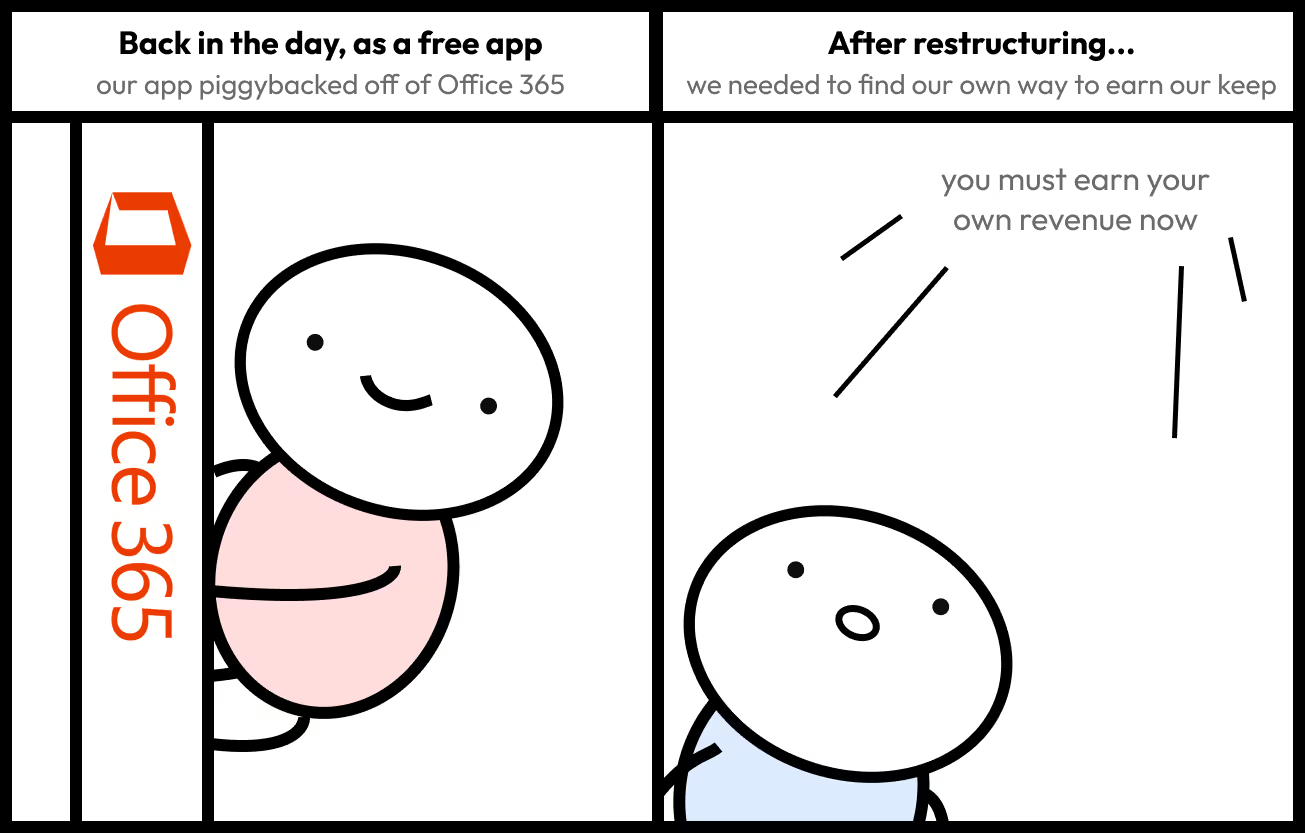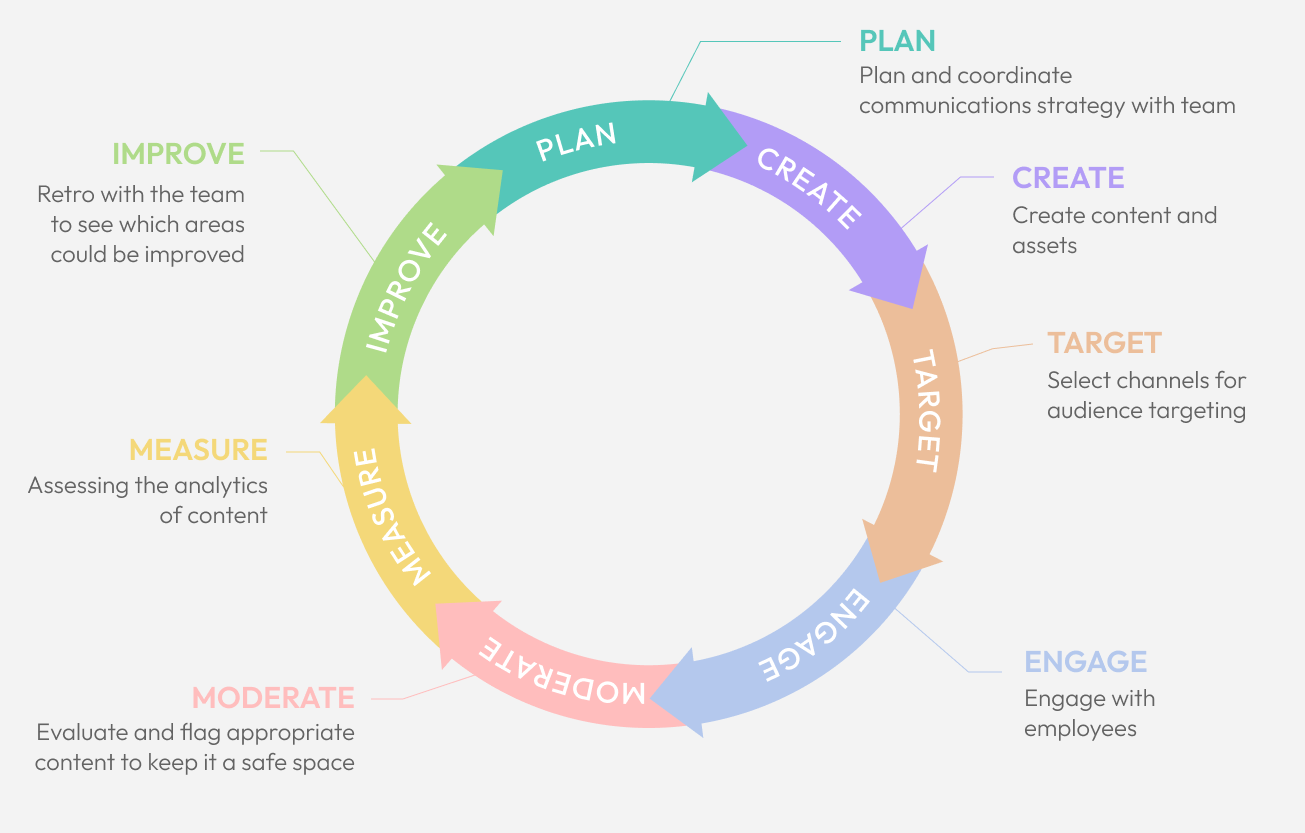
Well, let’s dive first into why the need for premium features even came about. Strategically, there was a shift in our app’s direction - going from an app that was a free add-on in the Microsoft 365 app suite to being part of a suite of premium apps. And thus began the journey of each team setting out to create premium value.

Great question! Our team’s primary set of users were corporate communicators, meaning they’re the ones who plan, coordinate and even create all the communications that are sent out to the company internally. After diving deep into customer calls and secondary research, we were able to gather that they had a formula for their success - something we affectionately call, “The Communications Lifecycle”.

Upon further analysis, a gap that we identified was this: our lovely corporate communicator friends were unable to consolidate employee engagement into one place. There was no mechanism to allow anything to be “viral” intentionally. Looking into other social media apps, we observed the sheer power of hashtags for social media campaigns. We took that idea and ran with it.
We didn't want to simply copy and paste the technology of hashtags and call it a day. We wanted to empower corporate communicators to be able to aggregate all of the employee energy and engagement, gather metrics and be able to improve on their communications plans. Given that there was a need for speed, a core principle that our team operated on was: build fast, iterate fast.
We identified the most fundamental things that corporate communicators would need to successfully run a campaign and built on that.
I spearheaded many design iterations of how a campaign page could look like, how the flows would come to life within the existing app's ecosystem. The product manager and I would try and test our hypotheses quickly with customers and user testing sessions.
Within a month, with the input of the team, I put together a deck to showcase not only how campaigns could exist in Engage, but how customers could leverage it in their internal comms strategies. Needless to say, leadership buy-in was probably the smoothest part of this entire process.
Within three months, we delivered the first version of Campaigns out to customers.
We gathered more feedback, iterated and iterated and through years of hard work and great team work, we were able to create a version of campaigns that helped us reach 2 million monthly active users.
Campaigns wasn't an overnight success by any means. If I were to summarize what led to the success of this feature, I'd highlight the following: